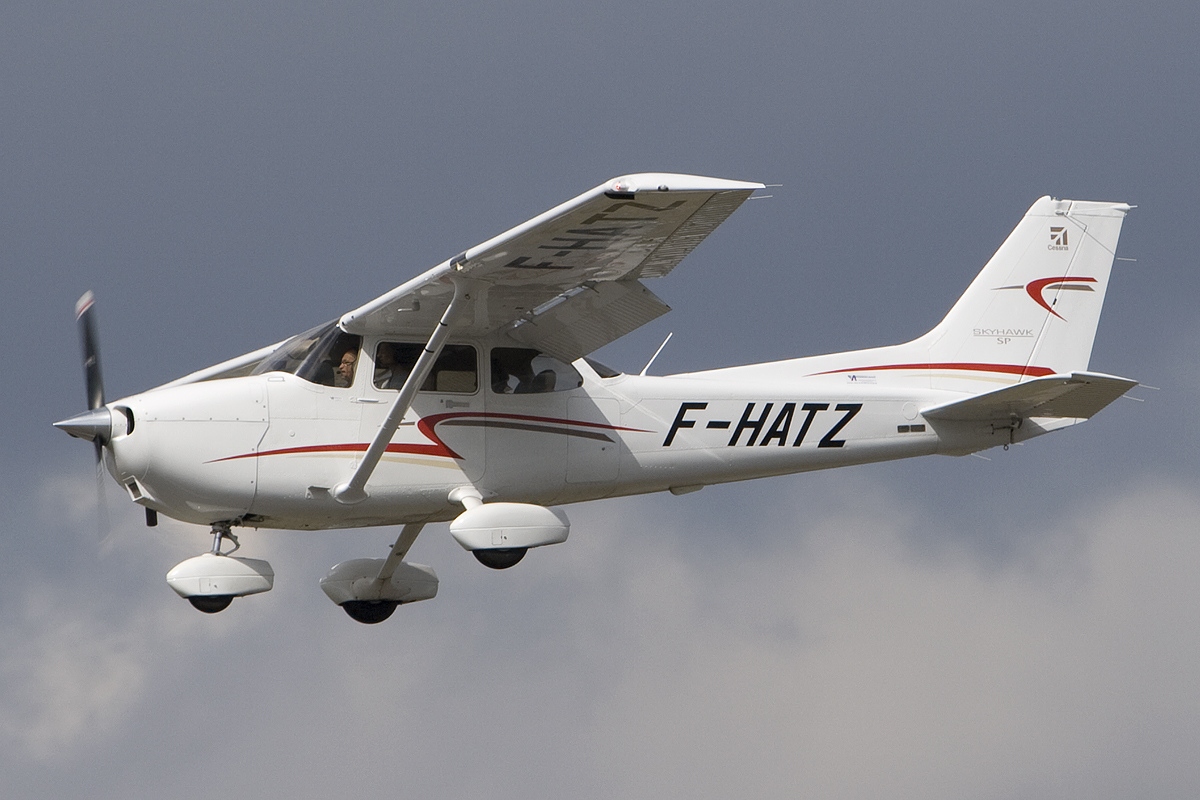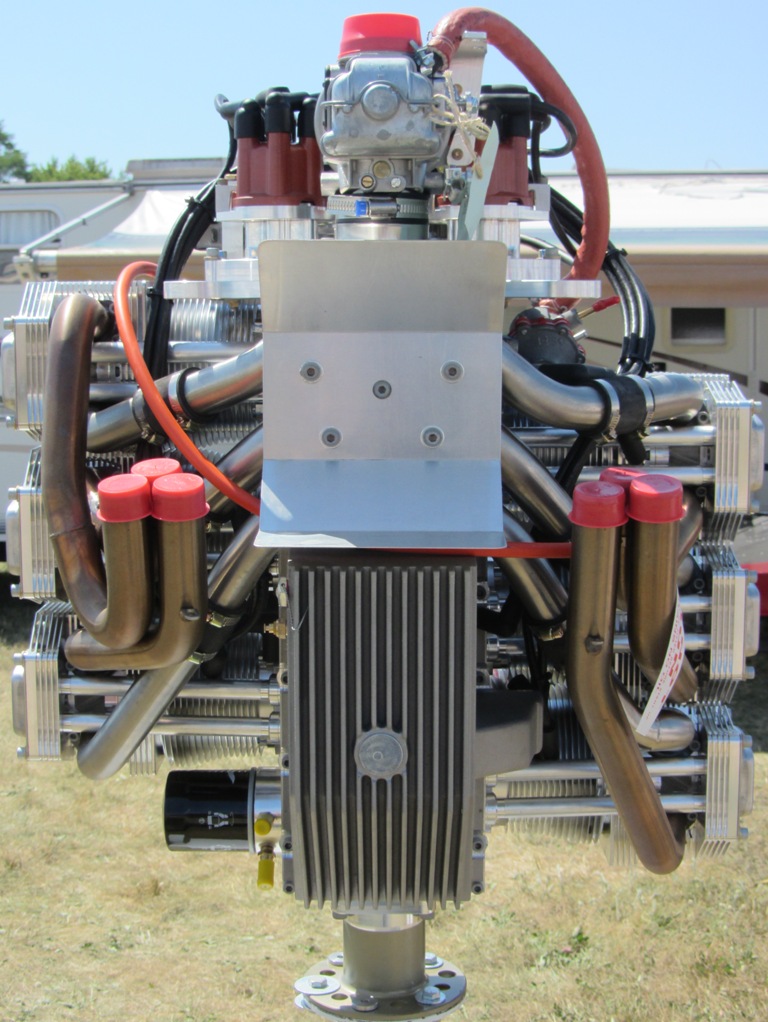|
Albaviation D24 MagicOne
The Albaviation D24 MagicOne is an Italian ultralight aircraft designed and produced by Albaviation. The company was at one time located in Corropoli, but is now in Montegiorgio. The aircraft is supplied as a kit for amateur construction or complete and ready-to-fly.Tacke, Willi; Marino Boric; et al: ''World Directory of Light Aviation 2015-16'', page 26. Flying Pages Europe SARL, 2015. Design and development The D24 MagicOne was designed to comply with the Fédération Aéronautique Internationale microlight rules. It features a strut-braced high-wing, an enclosed cabin with two-seats-in-side-by-side configuration, accessed by doors, fixed tricycle landing gear and a single engine in tractor configuration. The aircraft is made from aluminum sheet. Its span wing employs fowler flaps and has a fixed 70% span leading edge slot. Standard engines available are the Rotax 912ULS, Jabiru 2200 and the Jabiru 3300 four-stroke powerplants. With a laminar flow airfoil An airf ... [...More Info...] [...Related Items...] OR: [Wikipedia] [Google] [Baidu] |
WikiProject Aircraft
A WikiProject, or Wikiproject, is a Wikimedia movement affinity group for contributors with shared goals. WikiProjects are prevalent within the largest wiki, Wikipedia, and exist to varying degrees within Wikimedia project, sister projects such as Wiktionary, Wikiquote, Wikidata, and Wikisource. They also exist in different languages, and translation of articles is a form of their collaboration. During the COVID-19 pandemic, CBS News noted the role of Wikipedia's WikiProject Medicine in maintaining the accuracy of articles related to the disease. Another WikiProject that has drawn attention is WikiProject Women Scientists, which was profiled by ''Smithsonian Magazine, Smithsonian'' for its efforts to improve coverage of women scientists which the profile noted had "helped increase the number of female scientists on Wikipedia from around 1,600 to over 5,000". On Wikipedia Some Wikipedia WikiProjects are substantial enough to engage in cooperative activities with outside organization ... [...More Info...] [...Related Items...] OR: [Wikipedia] [Google] [Baidu] |
Tractor Configuration
In aviation, the term tractor configuration refers to an aircraft constructed in the standard configuration with its engine mounted with the propeller in front of it so that the aircraft is "pulled" through the air. Oppositely, the pusher configuration places the airscrew behind and propels the aircraft forward. Through common usage, the word "propeller" has come to mean any airscrew, whether it actually propels or pulls the plane. In the early years of powered aviation both tractor and pusher designs were common. However, by the midpoint of the First World War, interest in pushers declined and the tractor configuration dominated. Today, propeller-driven aircraft are assumed to be tractors unless it is stated otherwise. Origins The first airplane to have a "tractor" configuration was the Goupy No.2 (first flight on 11 March 1909) designed by Mario Calderara and financed by Ambroise Goupy at the French firm Blériot Aéronautique. When it was constructed, it was the fastest ... [...More Info...] [...Related Items...] OR: [Wikipedia] [Google] [Baidu] |
Aircraft Engine
An aircraft engine, often referred to as an aero engine, is the power component of an aircraft propulsion system. Most aircraft engines are either piston engines or gas turbines, although a few have been rocket powered and in recent years many small UAVs have used electric motors. Manufacturing industry In commercial aviation the major Western manufacturers of turbofan engines are Pratt & Whitney (a subsidiary of Raytheon Technologies), General Electric, Rolls-Royce, and CFM International (a joint venture of Safran Aircraft Engines and General Electric). Russian manufacturers include the United Engine Corporation, Aviadvigatel and Klimov. Aeroengine Corporation of China was formed in 2016 with the merger of several smaller companies. The largest manufacturer of turboprop engines for general aviation is Pratt & Whitney. General Electric announced in 2015 entrance into the market. Development history * 1848: John Stringfellow made a steam engine for a 10-foot ... [...More Info...] [...Related Items...] OR: [Wikipedia] [Google] [Baidu] |
Four Stroke
A four-stroke (also four-cycle) engine is an internal combustion (IC) engine in which the piston completes four separate strokes while turning the crankshaft. A stroke refers to the full travel of the piston along the cylinder, in either direction. The four separate strokes are termed: #Intake: Also known as induction or suction. This stroke of the piston begins at top dead center (T.D.C.) and ends at bottom dead center (B.D.C.). In this stroke the intake valve must be in the open position while the piston pulls an air-fuel mixture into the cylinder by producing vacuum pressure into the cylinder through its downward motion. The piston is moving down as air is being sucked in by the downward motion against the piston. #Compression: This stroke begins at B.D.C, or just at the end of the suction stroke, and ends at T.D.C. In this stroke the piston compresses the air-fuel mixture in preparation for ignition during the power stroke (below). Both the intake and exhaust valves are close ... [...More Info...] [...Related Items...] OR: [Wikipedia] [Google] [Baidu] |
Airfoil
An airfoil (American English) or aerofoil (British English) is the cross-sectional shape of an object whose motion through a gas is capable of generating significant lift, such as a wing, a sail, or the blades of propeller, rotor, or turbine. A solid body moving through a fluid produces an aerodynamic force. The component of this force perpendicular to the relative freestream velocity is called lift. The component parallel to the relative freestream velocity is called drag. An airfoil is a streamlined shape that is capable of generating significantly more lift than drag. Airfoils can be designed for use at different speeds by modifying their geometry: those for subsonic flight generally have a rounded leading edge, while those designed for supersonic flight tend to be slimmer with a sharp leading edge. All have a sharp trailing edge. Foils of similar function designed with water as the working fluid are called hydrofoils. The lift on an airfoil is primarily th ... [...More Info...] [...Related Items...] OR: [Wikipedia] [Google] [Baidu] |
Four-stroke
A four-stroke (also four-cycle) engine is an internal combustion (IC) engine in which the piston completes four separate strokes while turning the crankshaft. A stroke refers to the full travel of the piston along the cylinder, in either direction. The four separate strokes are termed: #Intake: Also known as induction or suction. This stroke of the piston begins at top dead center (T.D.C.) and ends at bottom dead center (B.D.C.). In this stroke the intake valve must be in the open position while the piston pulls an air-fuel mixture into the cylinder by producing vacuum pressure into the cylinder through its downward motion. The piston is moving down as air is being sucked in by the downward motion against the piston. #Compression: This stroke begins at B.D.C, or just at the end of the suction stroke, and ends at T.D.C. In this stroke the piston compresses the air-fuel mixture in preparation for ignition during the power stroke (below). Both the intake and exhaust valves are clo ... [...More Info...] [...Related Items...] OR: [Wikipedia] [Google] [Baidu] |
Jabiru 3300
The Jabiru 3300 is a lightweight four-stroke, horizontally opposed "flat-six" air-cooled aircraft engine produced by Jabiru Aircraft. The engines are direct drive and fitted with alternators, silencers, vacuum pump drives and dual ignition systems as standard. The engine is used to power homebuilt and ultralight aircraft. History Jabiru Aircraft began as a builder of small two-seater aircraft in Bundaberg, Australia. It turned to producing its own engines when supplies of the Italian-sourced engines previously used dried up. Jabiru engines are designed to be manufactured in small batch quantities, so the firm uses CNC machines to mill major engine parts such as cylinder blocks and heads, rather than using cast items. The 3300 is a modular development of Jabiru's flat-four 2200 engine. In November 2014, the Australian Civil Aviation Safety Authority proposed restricting all Jabiru-powered aircraft to day-visual flight rules only, without passengers or solo students and with ... [...More Info...] [...Related Items...] OR: [Wikipedia] [Google] [Baidu] |
Jabiru 2200
The Jabiru 2200 is a lightweight naturally aspirated, pushrod four-stroke, flat four, air-cooled aircraft engine produced by Jabiru Aircraft. Design and development The conventional direct-drive engine is fitted with an alternator, silencers, vacuum pump drives and dual ignition systems as standard. The engine generates up to 80 bhp at 3,300 rpm. In Europe the engine competes with the Rotax 912, another flat four four-stroke engine, but one that has water-cooled cylinder heads and a geared reduction drive to the propeller. Jabiru Aircraft began as a builder of small two-seater aircraft in Bundaberg, Australia Australia, officially the Commonwealth of Australia, is a Sovereign state, sovereign country comprising the mainland of the Australia (continent), Australian continent, the island of Tasmania, and numerous List of islands of Australia, sma .... It turned to producing its own engines when supplies of the Italian-sourced engines previously used dried up. J ... [...More Info...] [...Related Items...] OR: [Wikipedia] [Google] [Baidu] |
Rotax 912ULS
The Rotax 912 is a horizontally-opposed four-cylinder, naturally aspirated, four-stroke aircraft engine with a reduction gearbox. It features liquid-cooled cylinder heads and air-cooled cylinders. Originally equipped with carburetors, later versions are fuel injected. Dominating the market for small aircraft and kitplanes, Rotax produced its 50,000th 912-series engine in 2014. Originally available only for light sport aircraft, ultralight aircraft, autogyros and drones, the 912-series engine was approved for certified aircraft in 1995. Design and development The Rotax 912 was first sold in 1989 in non- certificated form for use in ultralights and motorgliders. The original 912 UL engine has a capacity of and a compression ratio of 9.1:1. The engine differs from previous generation aircraft engines (such as the Lycoming O-235) in that it has air-cooled cylinders with liquid-cooled heads and uses a 2.43:1 PSRU reduction gearbox to reduce the engine's relatively hig ... [...More Info...] [...Related Items...] OR: [Wikipedia] [Google] [Baidu] |
Leading Edge Slot
A leading-edge slot is a fixed aerodynamic feature of the wing of some aircraft to reduce the stall speed and promote good low-speed handling qualities. A leading-edge slot is a spanwise gap in each wing, allowing air to flow from below the wing to its upper surface. In this manner they allow flight at higher angles of attack and thus reduce the stall speed. Purpose and development At an angle of attack above about 15° many airfoils enter the stall. Modification of such an airfoil with a fixed leading-edge slot can increase the stalling angle to between 22° and 25°.Clancy, L.J., ''Aerodynamics'', Section 6.9 Slots were first developed by Handley Page in 1919 and the first aircraft to fly with them was the experimental H.P.17, a modified Airco DH.9A. Their invention is credited jointly to Sir Frederick Handley Page and Gustav Lachmann. The first aircraft fitted with controllable slots was the Handley Page H.P.20. Licensing the design became one of Handley Page's major s ... [...More Info...] [...Related Items...] OR: [Wikipedia] [Google] [Baidu] |
Flap (aeronautics)
A flap is a high-lift device used to reduce the stalling speed of an aircraft wing at a given weight. Flaps are usually mounted on the wing trailing edges of a fixed-wing aircraft. Flaps are used to reduce the take-off distance and the landing distance. Flaps also cause an increase in drag so they are retracted when not needed. The flaps installed on most aircraft are partial-span flaps; spanwise from near the wing root to the inboard end of the ailerons. When partial-span flaps are extended they alter the spanwise lift distribution on the wing by causing the inboard half of the wing to supply an increased proportion of the lift, and the outboard half to supply a reduced proportion of the lift. Reducing the proportion of the lift supplied by the outboard half of the wing is accompanied by a reduction in the angle of attack on the outboard half. This is beneficial because it increases the margin above the stall of the outboard half, maintaining aileron effectiveness and redu ... [...More Info...] [...Related Items...] OR: [Wikipedia] [Google] [Baidu] |






